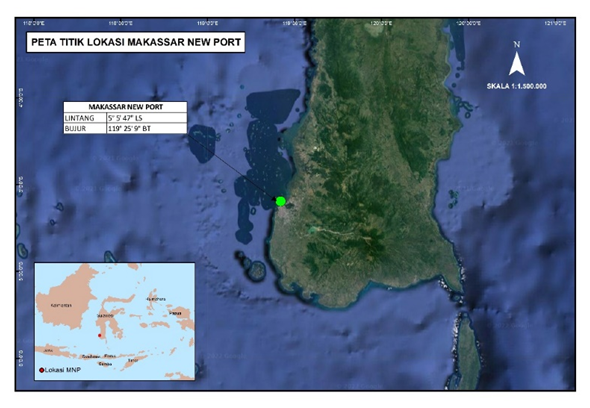Analysis of Operational Service Performance of Terminal II New Makassar Container Port
Main Article Content
Abstract
Ports influence local economic development and facilitate the flow of commodity distribution between regions. Ports become drivers of regional development supported by optimal logistics system performance. Seeing the importance of maritime logistics in Indonesia, it is necessary to build a comprehensive maritime logistics system with good performance. One of the ports that can be an illustration of the condition of ports in Indonesia is Terminal II of the New Makassar Container Port where this port is designated as the main port of Makassar city which supports export-import activities. Thus, this study aims to analyze the service performance of Terminal II operational activities. The method used is through observation or direct visits to research locations to obtain data related to operational performance and conduct analysis by comparing performance achievements with predetermined performance standards. Based on the results of the analysis that has been carried out, the overall operational service performance results are stated to be good because they comply with performance standards. However, the obstacle in increasing the flow of containers to support performance is the lack of international ships mooring due to the limited length of the berth being operated.
Downloads
Article Details

This work is licensed under a Creative Commons Attribution 4.0 International License.
Allow anyone to modify, improve, and make derivative works, even for commercial purposes, as long as they credit to you for the original work.
Deprecated: json_decode(): Passing null to parameter #1 ($json) of type string is deprecated in /home/journal33/public_html/plugins/generic/citations/CitationsPlugin.inc.php on line 49
References
data.worldbank.org, “Logistics Performance Index (LPI),” 2018.
J. Malisan, E. Marpaung, G. Hutapea, F. S. Puriningsih, and D. Arianto, “Development of short sea shipping in the north coast of Java Island, Indonesia as a potential market,” Transp. Res. Interdiscip. Perspect., vol. 18, no. November 2021, p. 100760, 2023, doi: 10.1016/j.trip.2023.100760.
S. Bensassi, L. Márquez-Ramos, I. Martínez-Zarzoso, and C. Suárez-Burguet, “Relationship between logistics infrastructure and trade: Evidence from Spanish regional exports,” Transp. Res. Part A Policy Pract., vol. 72, pp. 47–61, 2015, doi: 10.1016/j.tra.2014.11.007.
D. J. 1Pelindo Kadir, Abdul Rahman; Duakaju, “Formulasi Strategi Makassar New Port Dan Pelabuhan Bitung Sebagai International Hub Port Formulation of Makassar Strategy New Port and Port of Bitung As International Hub Port,” Hasanuddin J. Appl. Bus. Entrep. FORMULASI, vol. 1, no. 4, pp. 10–20, 2018.
B. López-Bermúdez, M. J. Freire-Seoane, and E. Lesta-Casal, “Core and comprehensive ports: The new challenge for the development of the Spanish port system,” Transp. Res. Interdiscip. Perspect., vol. 8, p. 100243, 2020, doi: 10.1016/j.trip.2020.100243.
F. Adam, Pradono, and M. Z. Ibad, “Kinerja Pelayanan Operasional Pelabuhan Panjang Provinsi Lampung,” J. Perenc. dan Kebijak. Publik, vol. 1, no. 1, pp. 1–10, 2017.
KP 432 tentang Rencana Induk Pelabuhan Nasional (RIPN), “Tentang Rencana Induk Pelabuhan Nasional,” Menteri Perhub. Republik Indones., pp. 1–120, 2017.
M. F. B. . Yusup, “Impact Analysis Of Implementation Of Bonded Warehouse Policy In Makassar Port New Port On Logistic Costs”, mp, vol. 1, no. 1, pp. 17-25, Feb. 2022.
S. Lim, S. Pettit, W. Abouarghoub, and A. Beresford, “Port sustainability and performance: A systematic literature review,” Transp. Res. Part D Transp. Environ., vol. 72, pp. 47–64, 2019, doi: 10.1016/j.trd.2019.04.009.

